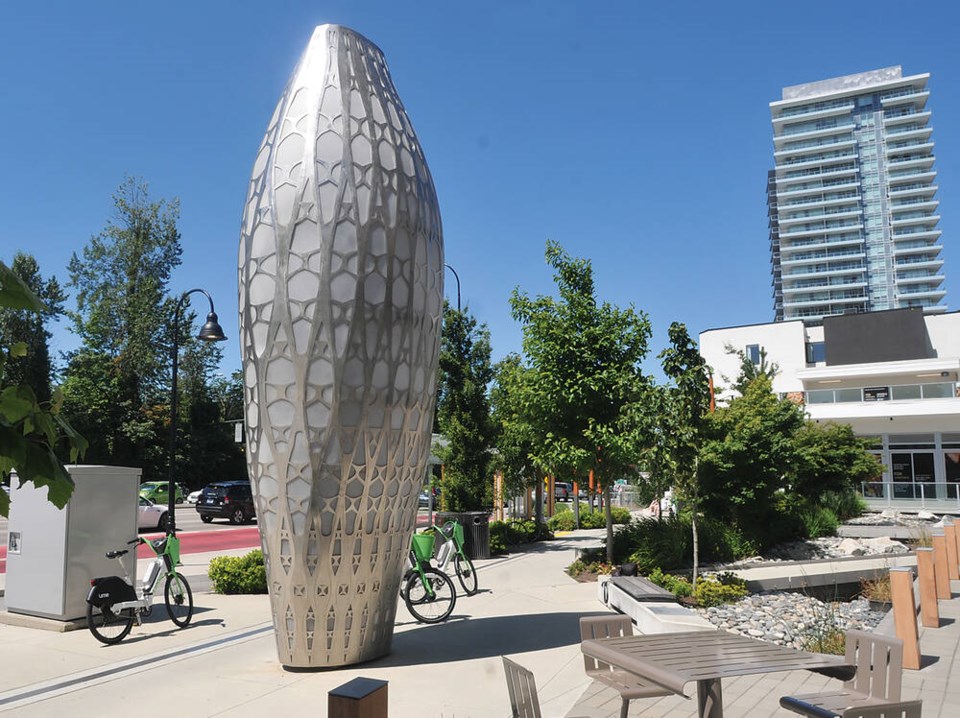Colossal, intricately detailed and often illuminated in various colours, it’s a hard task driving into the District of North Â鶹´«Ã½Ó³»and not become captivated by the artwork at the corner of Marine Drive and Capilano Road.
Two years on from its creation and it continues to turn heads — so much so that the piece, titled Alluvii and designed by U.S. artist Blessing Hancock — has just been selected as one of the 100 finalists in the , an international awards program celebrating those behind public art installations.
“It’s a great honour,” said Hancock, a site specific sculpture artist from Tucson, Arizona.
Hancock, who took home a CODAaward last year for , a large, illuminated, metal sculpture in California’s Santa Rosa, is familiar with praise.
The artist’s work has been featured in Bloomberg and the New York Times, and her pieces can be seen everywhere from China’s Chengdu to South Carolina, but recognition via the internationally acclaimed CODAawards is in a league of its own, she said.
“It’s always such a nice accomplishment, especially as this is one of the bigger, international awards for public art.”
The piece, one of three sculptures in a series created for Lions Gate Village, was commissioned in 2022 to be a gateway marker at the entrance to the District. Despite being one of dozens of applauded pieces crafted by the artist, Alluvii still stands out as one of her most cherished. Namely, she said, for its timeless quality and design.
“I’ve worked in the public art field now for 17 years and I’ve installed probably 60 sculptures internationally around the world, and it’s still right up there as one of my favourites,” she said.
“I just always loved the idea of having this family of forms, all three of them working together to express one overall concept.”
Inspired by the gushing waters of North Vancouver’s Cleveland Dam, the stainless steel piece was dubbed Alluvii in a nod to the word “alluvion,” a term used to describe the action of a sea or river forming new land by deposition.
“I went up into the mountains there, and was so inspired by that beautiful elegance of the water streaming down the dam,” she said.
“I could use my imagination to think of the artwork, streaming down that dam and that waterfall, all the way down the river into the bay.”
Hancock said the piece is open to multiple interpretations. While one person may see streaming water, she knows others have visioned a school of fish swimming, or orcas, or other nods to Indigenous cultures and totems.
“I think that’s what makes it unique, in that it has that sort of primary, secondary and tertiary elements that are all working together as a conversation between three pieces,” she said.
The award will be celebrated but Hancock assured she has no plans to sit and rest on her laurels. The artist is currently already working on her next piece: Loqui, a three-story tall piece in Nashville, Tennessee, and her largest and most technologically complex work of art to date.
Mina Kerr-Lazenby is the North Shore News’ Indigenous and civic affairs reporter. This reporting beat is made possible by the .
